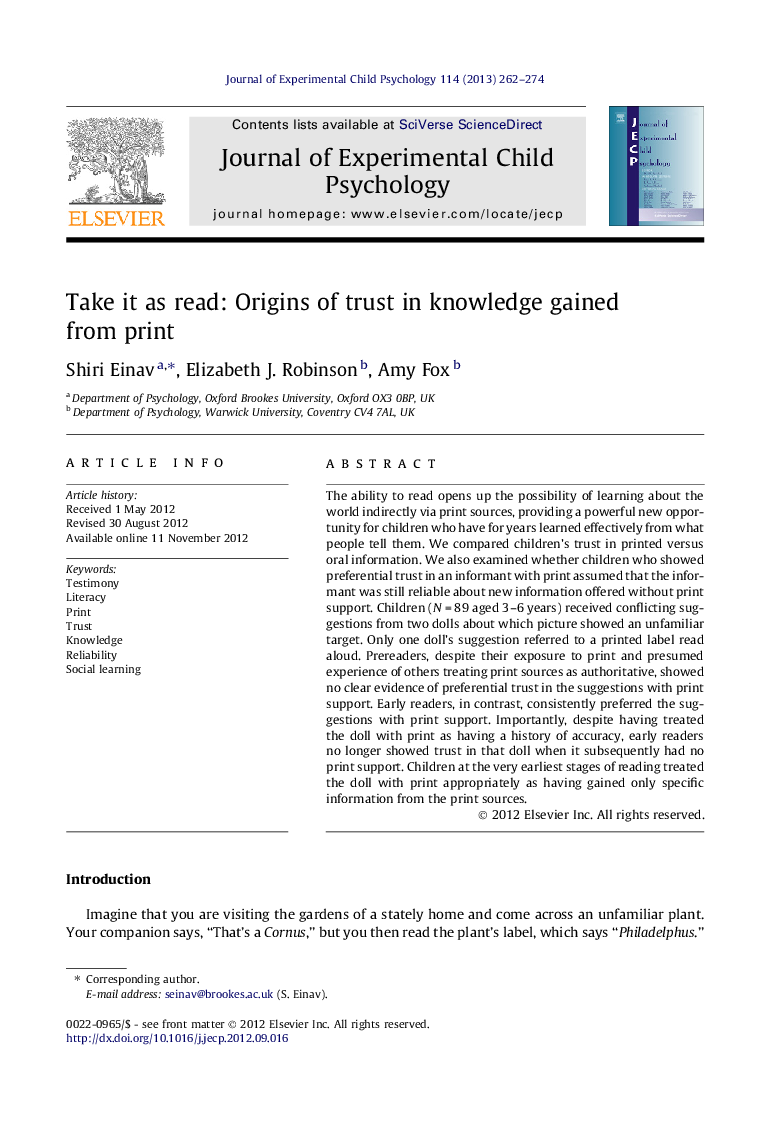| کد مقاله | کد نشریه | سال انتشار | مقاله انگلیسی | نسخه تمام متن |
|---|---|---|---|---|
| 918308 | 919471 | 2013 | 13 صفحه PDF | دانلود رایگان |

The ability to read opens up the possibility of learning about the world indirectly via print sources, providing a powerful new opportunity for children who have for years learned effectively from what people tell them. We compared children’s trust in printed versus oral information. We also examined whether children who showed preferential trust in an informant with print assumed that the informant was still reliable about new information offered without print support. Children (N = 89 aged 3–6 years) received conflicting suggestions from two dolls about which picture showed an unfamiliar target. Only one doll’s suggestion referred to a printed label read aloud. Prereaders, despite their exposure to print and presumed experience of others treating print sources as authoritative, showed no clear evidence of preferential trust in the suggestions with print support. Early readers, in contrast, consistently preferred the suggestions with print support. Importantly, despite having treated the doll with print as having a history of accuracy, early readers no longer showed trust in that doll when it subsequently had no print support. Children at the very earliest stages of reading treated the doll with print appropriately as having gained only specific information from the print sources.
► Early readers trust informants whose suggestions stem from a printed source.
► When a trusted informant no longer has print support, early readers’ trust declines.
► Early readers take into account how a trusted informant achieved accuracy.
► Pre-readers do not invest more trust in printed over oral information.
Journal: Journal of Experimental Child Psychology - Volume 114, Issue 2, February 2013, Pages 262–274